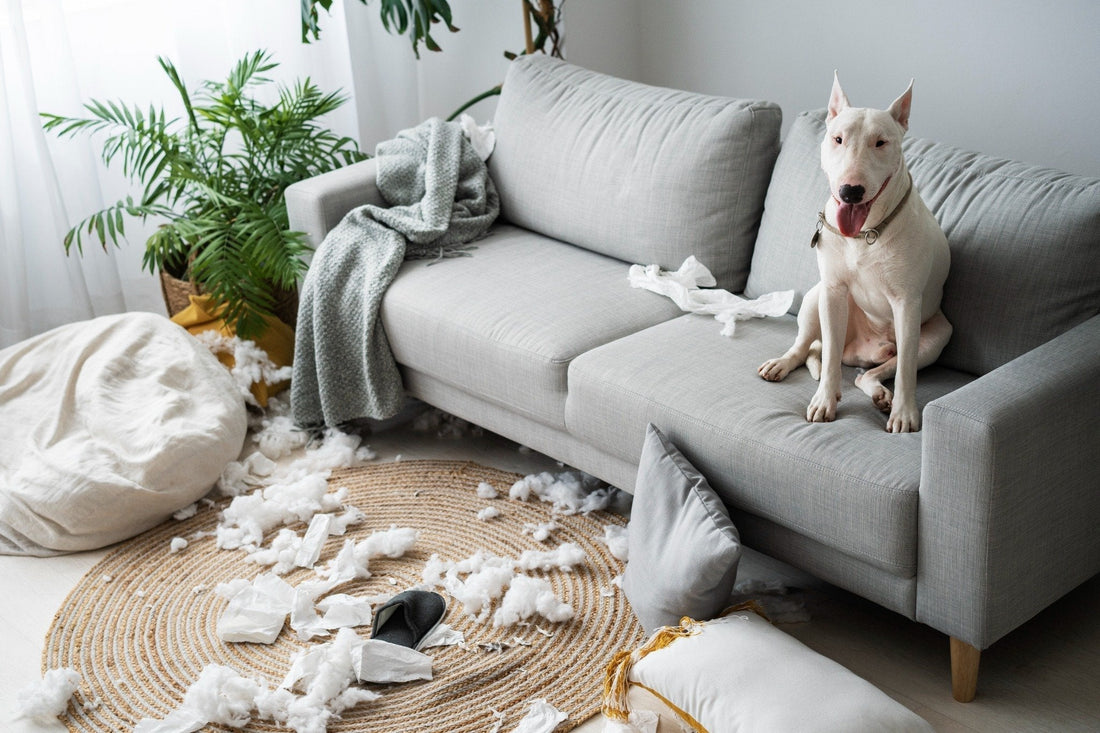
🐶 How to Stop Dogs from Chewing Furniture: Proven Tips & Tricks
Share
You walk into the living room and—oh no!—your favorite chair leg looks like it’s been through a woodchipper. Sound familiar? You’re not alone. Chewing is one of the most common behavioral issues dog owners face. While it can be frustrating, it’s actually a natural instinct. The trick is learning how to redirect the behavior and protect your furniture without making your dog feel punished.
In this blog, we’ll explore why dogs chew, practical steps to stop destructive chewing, recommended toys, and proven training techniques.
1. Why Do Dogs Chew Furniture? 🛋️
Dogs chew for several reasons, and understanding the root cause is the first step:
- Teething: Puppies chew to relieve gum pain.
- Boredom: Dogs left alone for long periods chew to entertain themselves.
- Anxiety: Separation anxiety often leads to destructive chewing.
- Lack of training: Dogs may not know what’s acceptable to chew.
👉 Identifying why your dog chews helps you pick the right solution.
2. Provide the Right Chew Toys 🦴
Dogs need an outlet. If you don’t provide one, they’ll find it themselves—often in your sofa cushions!
- For puppies: Soft rubber chew toys or frozen teething rings.
- For adult dogs: Durable toys like KONGs, rope toys, or nylon chews.
- Interactive options: Toys that dispense treats keep dogs mentally engaged.
💡 Rotate toys every few days to keep them exciting.
3. Use Taste Deterrents (Chew-Stop Sprays) 🛑
Non-toxic sprays with bitter flavors can discourage dogs from chewing furniture.
- Spray directly on wooden furniture legs or fabric edges.
- Always test a small area first to avoid staining.
- Reapply regularly for effectiveness.
4. Increase Physical & Mental Exercise 🐕
A tired dog is a happy (and well-behaved) dog.
- Daily walks: At least 30–60 minutes, depending on breed.
- Playtime: Fetch, tug-of-war, or chase.
- Mental enrichment: Puzzle feeders, training games, hide-and-seek with treats.
5. Crate Training & Safe Zones 🏡
When unsupervised, dogs should be in a safe space with approved chew toys.
- Crates or gated areas help prevent access to furniture.
- Ensure the area is comfortable and stress-free.
6. Train with Positive Reinforcement 🎉
- Reward your dog immediately when they chew the right thing.
- Redirect them gently from furniture to toys.
- Use consistent commands like “Leave it” or “No chew.”
7. Rule Out Medical Causes 🩺
Excessive chewing may be a sign of:
- Dental issues (pain relief through chewing)
- Nutritional deficiencies
- Compulsive behavior
If chewing is extreme or sudden, consult your vet.
FAQs on Chewing Behavior
Q1: When do puppies stop teething?
Usually between 6–8 months. Chewing may reduce after this period.
Q2: Can chewing be a sign of anxiety?
Yes, especially if it happens when left alone. Separation anxiety is common.
Q3: What if my dog ignores chew toys?
Try toys with treats inside or toys with different textures.
